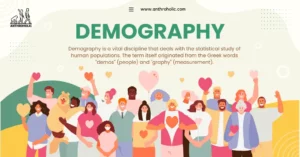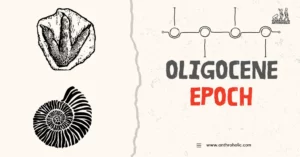AI Answer Evaluation Platform Live Now. Try Free Answer Evaluation Now
Holocene Epoch
The Holocene is the current geological epoch, extending from around 11,700 years ago following the last major ice age until now [1]. Its beginning marks the advent of a warm period that has remained relatively stable, providing a favorable environment for the flourishing of human civilization. As we dive into understanding the Holocene, we unravel the intricate relationship between climate, the environment, and human society.

Origin and Geological Significance
Naming and Definition
The term “Holocene” derives from the Greek words “holos,” meaning “whole,” and “kainos,” signifying “new” [2]. It represents the “entirely recent” epoch, with the significant characteristic of an ongoing warm period.
Geological Characteristics
The most distinguishing aspect of the Holocene is the stable climatic conditions that differentiate it from preceding epochs. Notable geological features of the Holocene include:
- Rising global temperatures: The epoch saw the Earth’s climate transition from a glacial period into a warmer phase, which led to the melting of vast ice sheets and consequent sea-level rise [3].
- Landscape changes: The climate transition reshaped landscapes across the world, with regions previously under ice developing into fertile lands.
Climate of the Holocene
Throughout the Holocene, Earth’s climate has been warm and stable, but not without variations.
Early Holocene: The Climatic Optimum
The Early Holocene, stretching from around 11,700 to 8,200 years ago, experienced a global warming phase known as the “Holocene Climatic Optimum.” During this phase, temperatures were generally higher than today’s average, especially in high latitudes [4].
| Period | Approximate Years Ago | Key Climatic Feature |
|---|---|---|
| Early Holocene | 11,700-8,200 | Holocene Climatic Optimum |
Middle Holocene: Cooling Begins
The Middle Holocene (8,200 to 4,200 years ago) was marked by a gradual global cooling, following the earlier warming trend. However, this period was still warmer than the subsequent Late Holocene [5].
Late Holocene: The Little Ice Age
The Late Holocene, leading up to the present, saw a significant cooling event known as the “Little Ice Age.” This period, between the 14th and 19th centuries, was marked by cooler-than-average global temperatures [6].
The climate characteristics of the Holocene period can be summarised in the following table:
| Period | Approximate Years Ago | Key Climatic Feature |
|---|---|---|
| Early Holocene | 11,700-8,200 | Holocene Climatic Optimum |
| Middle Holocene | 8,200-4,200 | Gradual cooling |
| Late Holocene | 4,200-Present | Little Ice Age |
The Holocene and Human Civilization
One cannot overlook the profound connection between the Holocene’s climate stability and the emergence and development of human civilization. The warm, stable conditions allowed humans to transition from nomadic hunter-gatherers to settled agricultural societies.
Emergence of Agriculture
The end of the Ice Age brought a period of increased rainfall in the Fertile Crescent, leading to abundant growth of wild cereals. This served as a catalyst for the development of agriculture [7].
Rise of Civilizations
With agriculture came settled life, leading to the establishment of the first cities and civilizations, notably in Mesopotamia, Egypt, Indus Valley, and China. These early civilizations were strongly shaped by their environment, often settled near water bodies for agricultural prosperity.
Technological Advancements
The Holocene also witnessed significant technological advancements. From simple stone tools to complex machinery, the progress in technology has been staggering.
Holocene Epoch: Human Impact and Anthropocene Debate
Human Impact
Human influence on the Earth’s ecosystem has been so significant during the Holocene that many scientists believe we have entered a new epoch: the Anthropocene [8]. Human activities such as deforestation, agriculture, urbanization, and industrialization have extensively modified the landscape and altered the global carbon cycle.
- Deforestation and Agriculture: Large-scale deforestation started with the advent of agriculture. As human populations expanded and farming practices intensified, this led to widespread land-use change [9].
- Urbanization: The rise of cities during the Holocene has had profound impacts on the environment. Urban areas have fundamentally transformed landscapes, biodiversity, and natural resources [10].
- Industrialization: The Industrial Revolution marked a significant turning point in the Holocene. Rapid industrialization led to a dramatic increase in carbon emissions, triggering global warming and climate change [11].
The Anthropocene Debate
The term “Anthropocene” was popularized by the Nobel laureate Paul Crutzen at the turn of the 21st century. It is used to denote the current geological age, viewed as the period during which human activity has been the dominant influence on climate and the environment [12].
Although not officially recognized as a distinct geological epoch, the Anthropocene is widely used in scientific literature. The debate surrounding its formal acceptance revolves around when exactly human impact became globally significant. Proposed markers include the start of agriculture, the Industrial Revolution, and the mid-20th century “Great Acceleration” of population growth and industrialization [13].
Conclusion
The Holocene is an epoch marked by remarkable climatic stability, providing a cradle for human civilization. It is characterized by a transition from a glacial period to a warm era, allowing humans to move from hunter-gatherer lifestyles to complex civilizations. However, the same human activities have significantly altered the Earth’s ecosystems, possibly heralding a new epoch – the Anthropocene.
The debate surrounding the Anthropocene mirrors our increasing awareness of human impact on the planet. As we continue to shape our world, understanding the Holocene provides crucial insights into the interplay between climate, the environment, and human society.
Suggested Articles
References
[1] Walker, M., Johnsen, S., Rasmussen, S.O., Popp, T., Steffensen, J.P., Gibbard, P., Hoek, W., Lowe, J., Andrews, J., Björck, S. and Cwynar, L.C., 2009. Formal definition and dating of the GSSP (Global Stratotype Section and Point) for the base of the Holocene using the Greenland NGRIP ice core, and selected auxiliary records. Journal of Quaternary Science: Published for the Quaternary Research Association, 24(1), pp.3-17. https://doi.org/10.1002/jqs.1227
[2] Cohen, K.M., Finney, S.C., Gibbard, P.L. and Fan, J.X., 2013. The ICS international chronostratigraphic chart. Episodes, 36(3), pp.199-204.
[3] Clark, P.U., Dyke, A.S., Shakun, J.D., Carlson, A.E., Clark, J., Wohlfarth, B., Mitrovica, J.X., Hostetler, S.W. and McCabe, A.M., 2009. The last glacial maximum. Science, 325(5941), pp.710-714.
[4] Renssen, H., Seppä, H., Crosta, X., Goosse, H. and Roche, D.M., 2012. Global characterization of the Holocene Thermal Maximum. Quaternary Science Reviews, 48, pp.7-19.
[5] Mayewski, P.A., Rohling, E.J., Stager, J.C., Karlen, W., Maasch, K.A., Meeker, L.D., Meyerson, E.A., Gasse, F., van Kreveld, S., Holmgren, K. and Lee-Thorp, J., 2004. Holocene climate variability. Quaternary Research, 62(3), pp.243-255.
[6] Miller, G.H., Geirsdóttir, Á., Zhong, Y., Larsen, D.J., Otto-Bliesner, B.L., Holland, M.M., Bailey, D.A., Refsnider, K.A., Lehman, S.J., Southon, J.R. and Anderson, C., 2012. Abrupt onset of the Little Ice Age triggered by volcanism and sustained by sea-ice/ocean feedbacks. Geophysical Research Letters, 39(2).
[7] Fuller, D.Q., Willcox, G. and Allaby, R.G., 2011. Cultivation and domestication had multiple origins: arguments against the core area hypothesis for the origins of agriculture in the Near East. World Archaeology, 43(4), pp.628-652.
[8] Steffen, W., Grinevald, J., Crutzen, P. and McNeill, J., 2011. The Anthropocene: conceptual and historical perspectives. Philosophical Transactions of the Royal Society A: Mathematical, Physical and Engineering Sciences, 369(1938), pp.842-867.
[9] Kaplan, J.O., Krumhardt, K.M. and Zimmermann, N., 2009. The prehistoric and preindustrial deforestation of Europe. Quaternary Science Reviews, 28(27-28), pp.3016-3034.
[10] Grimm, N.B., Faeth, S.H., Golubiewski, N.E., Redman, C.L., Wu, J., Bai, X. and Briggs, J.M., 2008. Global change and the ecology of cities. Science, 319(5864), pp.756-760.
[11] McNeill, J.R., 2000. Something new under the sun: An environmental history of the twentieth-century world (the global century series). WW Norton & Company.
[12] Crutzen, P.J., 2002. Geology of mankind. Nature, 415(6867), p.23.
[13] Zalasiewicz, J., Waters, C.N., Williams, M., Barnosky, A.D., Cearreta, A., Crutzen, P., Ellis, E., Ellis, M.A., Fairchild, I.J., Grinevald, J. and Haff, P., 2015. When did the Anthropocene begin? A mid-twentieth century boundary level is stratigraphically optimal. Quaternary International, 383, pp.196-203.




